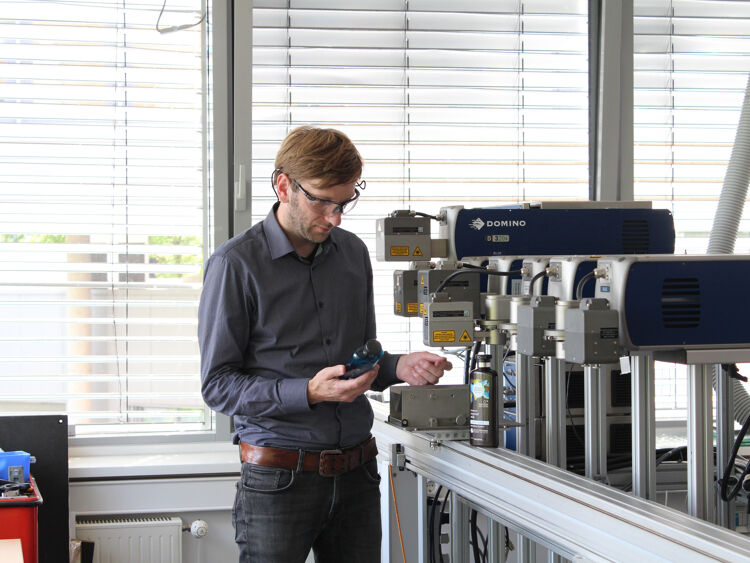Domino partners Procter and Gamble on innovative bottle print project

Print technology developer Domino Print Sciences joined forces with global consumer and personal care products provider Procter and Gamble (P&G) on a project to create special packaging to help visually impaired consumers distinguish between products.
While some products already carry traditional Braille markings to help people with visual impairments identify certain goods, Domino and P&G said due to the limited number of Braille users around the world, a more universal, alternative method was required.
The project also sought to support those with poor or reduced sight who have difficulty identifying personal care products while in the shower or bath, where sight aids such as glasses, contact lenses or magnifiers cannot be used effectively.
Dr. Stefan Stadler, team lead at the Laser Academy at Domino, along with P&G’s special consultant for inclusive design, Sumaira Latif, headed up a project to develop a new bottle design to meet this requirement. The trial was based on P&G’s Herbal Essences bio:renew range of shampoo and conditioners.
“Most shampoo and conditioner bottles are designed to look and feel the same,” Latif, who is registered blind herself, said. “We realised that we have a huge opportunity to improve our products and packaging, and to encourage other businesses to do the same.”
The team found that the bottom of the bottle, where the plastic is at its thickest, was the best location for the coding. Not only could visually impaired consumers easily identify this coding, but it would not impact the overall appearance of the main packaging.
The chosen design featured a row of raised lines on the bottom of the back of the shampoo bottles, with the ‘S’ being used to shampoo and stripes, while two rows of raised dots in the same place on conditioner bottles used ‘C’ to identify conditioner and circles.
Domino and P&G were keen to put the new design to the test and presented the newly-coded Herbal Essences bio:renew bottles to the Royal National Institute of Blind People (RNIB) in the UK for consumer testing.
Results from the testing showed a positive response from those living with either partial or complete sight loss. Based on this success, P&G rolled out the new design across all its US range of Herbal Essences bio:renew shampoos and conditioners.
“We are really passionate about helping our customers to produce products which enrich the lives of consumers, and which can be used and enjoyed by everyone, regardless of their circumstances,” Domino’s global account manager Nitin Mistry said.
“As such, we are thrilled to have worked with P&G on this project and would welcome discussion with any other organisations who are looking to design inclusivity into their product packaging.”
Topics
Interested in joining our community?
Enquire today about joining your local FESPA Association or FESPA Direct
Recent news

The importance of ink for large format printers
Ink is crucial for large format inkjet printers, influencing substrate compatibility, productivity, and cost. Nessan Cleary discusses the three main types which include UV-curable ink, latex ink and eco-solvent ink. Each ink type has specific strengths and weaknesses, making printers choice dependent on budget and intended applications.

What are the benefits of Direct-To-Fabric printing?
Direct-to-fabric printing is gaining popularity for high-volume textile production, enabling on-demand, customized short runs. These printers offer ink flexibility, accommodating various fabric types like cotton and silk, though ink development focuses on faster turnaround by reducing pre- and post-processing. Compared to traditional methods, direct-to-fabric inkjet printing is a more sustainable option due to reduced water and chemical usage, and localized production.

What are the opportunities for large format providers regarding digital touch screens?
Digital touchscreens are becoming increasingly common, offering businesses opportunities to improve customer engagement and streamline operations. Nessan Cleary shares, while more expensive to implement than standard digital displays due to complex software and integration needs, touchscreens provide self-service options, multilingual support, and can reduce staffing costs in various settings like retail, transportation, and healthcare.
